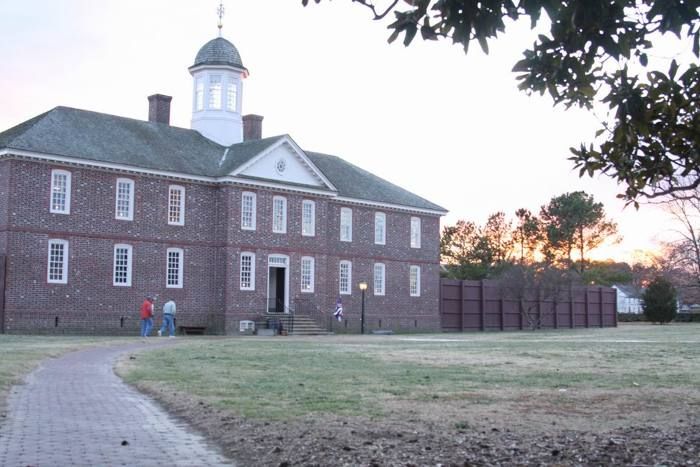
The beautiful DeWitt Wallace Decorative Arts Museum is once again home to the conference. Everything is housed there, from the auditorium to the dining area.
FWW co-sponsors a wonderful event,”Working Wood in the 18th Century,” every year at Colonial Williamsburg. This year’s theme is “Cabinetmakers Look to the East,” and explores the powerful Asian influence on the furniture of the time. Curved crest rails, cabriole legs, ball-and-claw feet, many forms of fretwork, joinery, and even the types of pieces themselves–tea tables, for example–all arose from the growing knowledge of the East and the objects pouring in from the China trade.
Presenters will include Williamsburg’s own cabinetmakers and joiners, plus luminaries like Phil Lowe. I’ll be at the show all week, and I’ll blog some highlights each day.
The presenters started bending and cutting wood right away this year, with Ted Boscana of CW’s Historic Trades joinery shop working on a fretwork garden bench he designed after historical Asian models.
And then Andrew Hunter of New York, who does his woodworking in a traditional Japanese fashion, explained the philosophy of being present and demonstrated the whole-body approach to hand-tool use that are both integral to the Eastern approach. He tailored his talk to an American audience of course, telling them to pick and choose anything that might help them be better woodworkers. It was fantastic, and he covered a ton in less than an hour, from the steel to the sharpening to hand-plane tuning and use.
By the way, Andrew’s recent article in FWW showed how he uses dovetail cleats in an innovative way to attach tabletops, making unique table designs possible.
If you’ve never attended this event, you should. The amphitheater is comfy, the woodworking is top-notch, the closeup camerawork makes everything very clear, and there are a lot of opportunities for meals and cocktails with new friends. Colonial Williamsburg does a wonderful job with the event, and as a bonus, there is the living history going on all around the event.



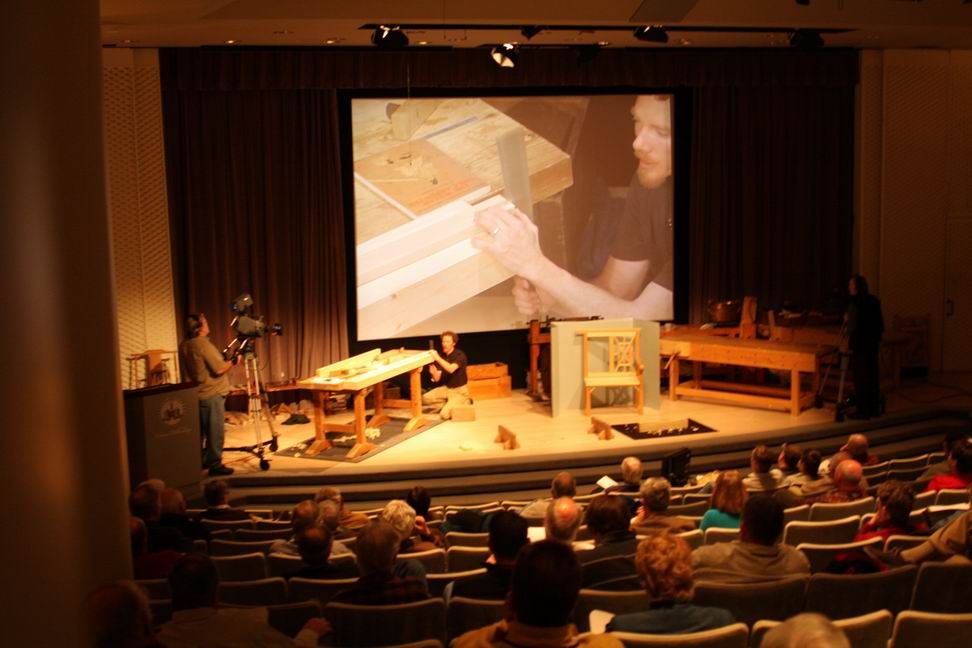






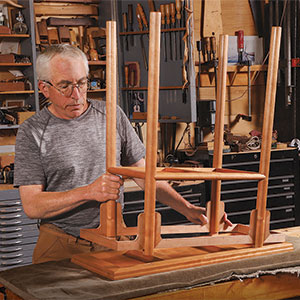
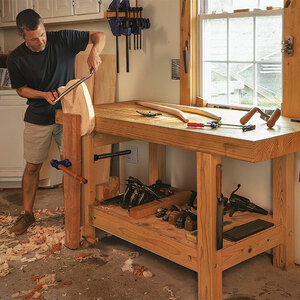
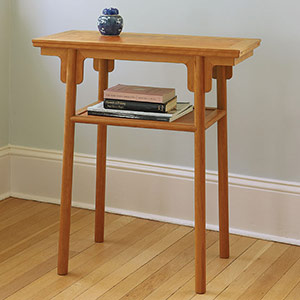
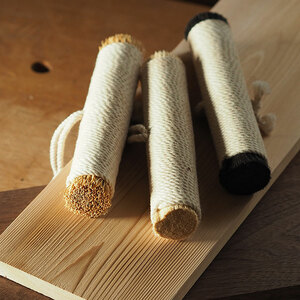











Log in or create an account to post a comment.
Sign up Log in